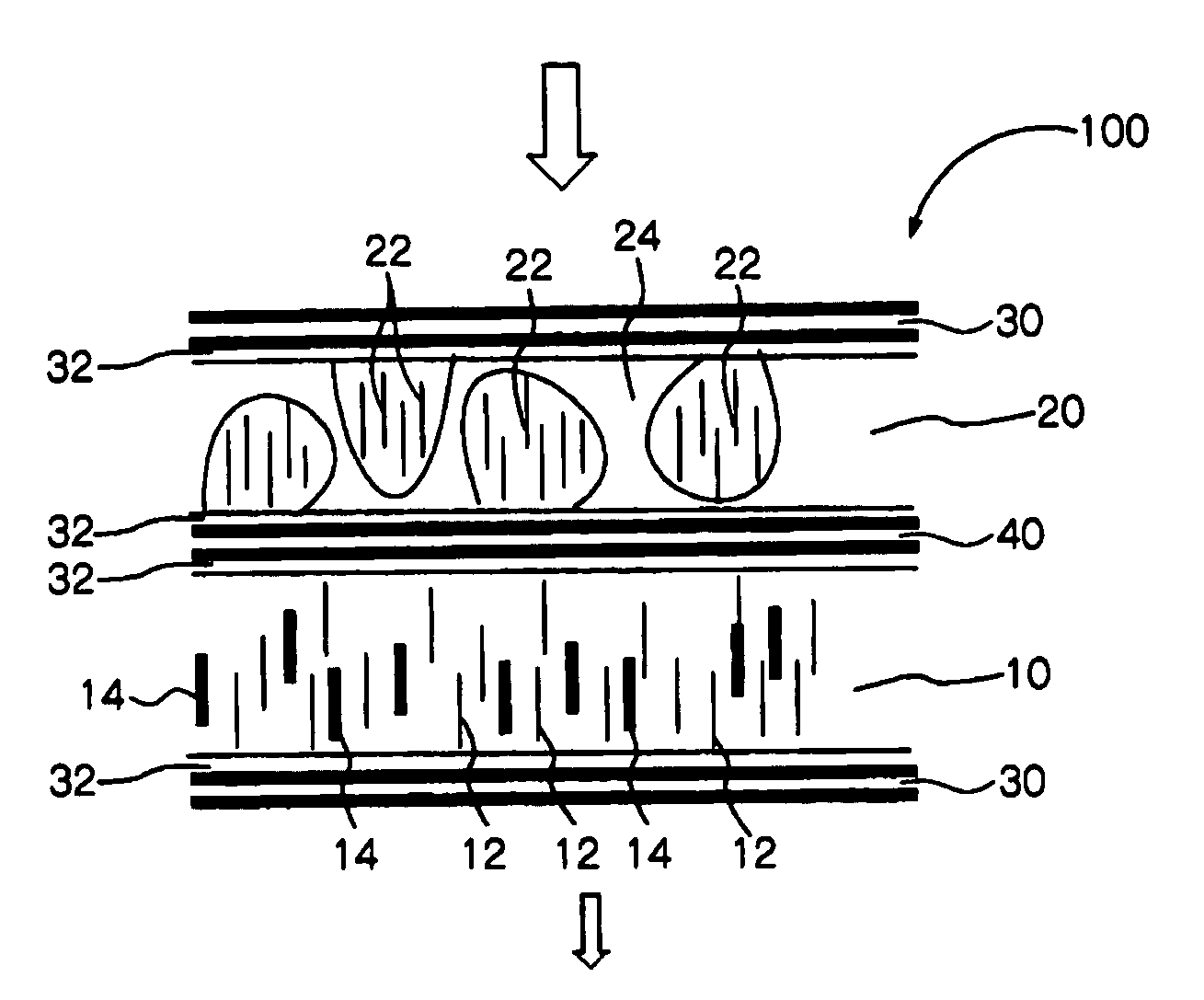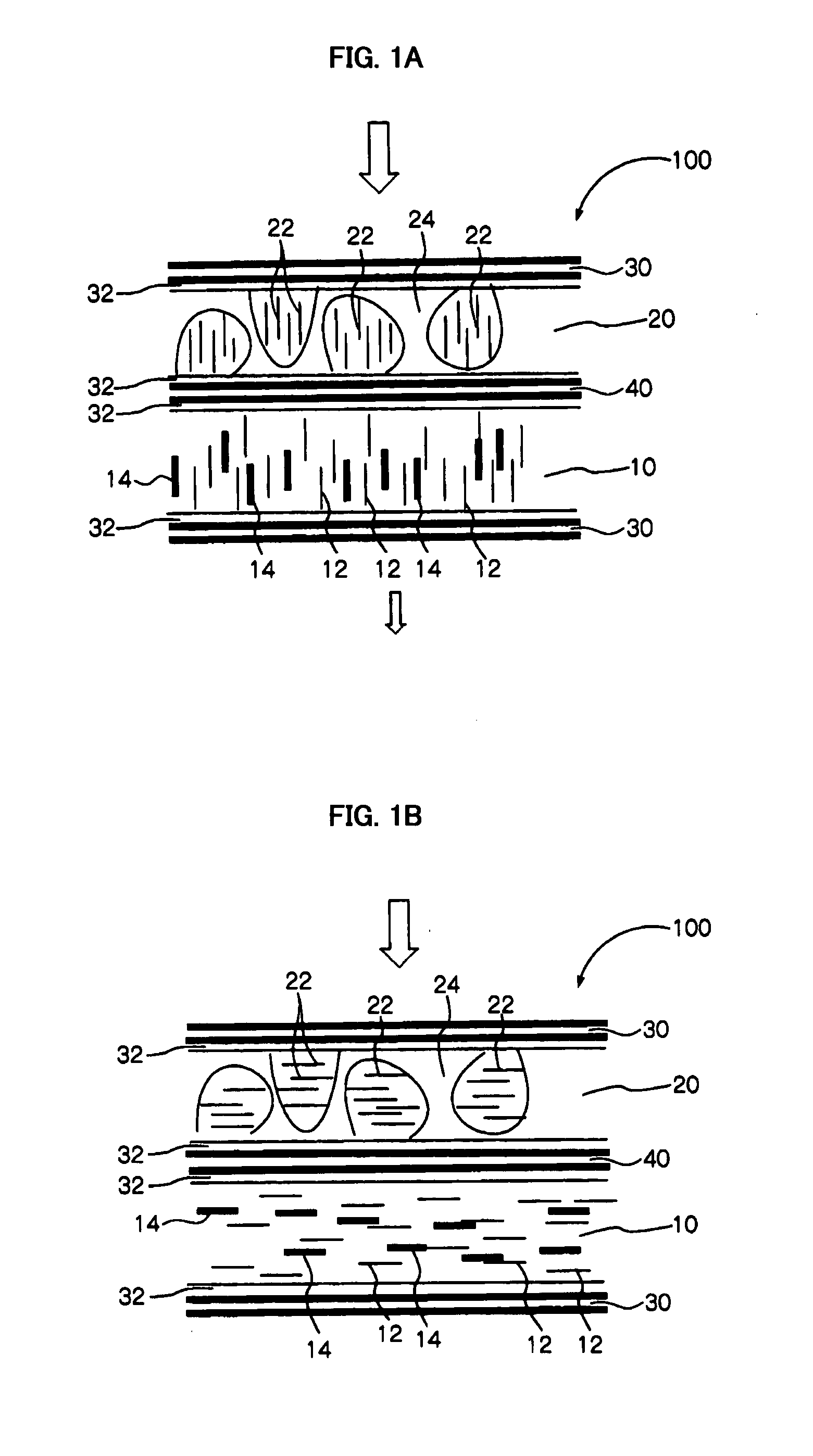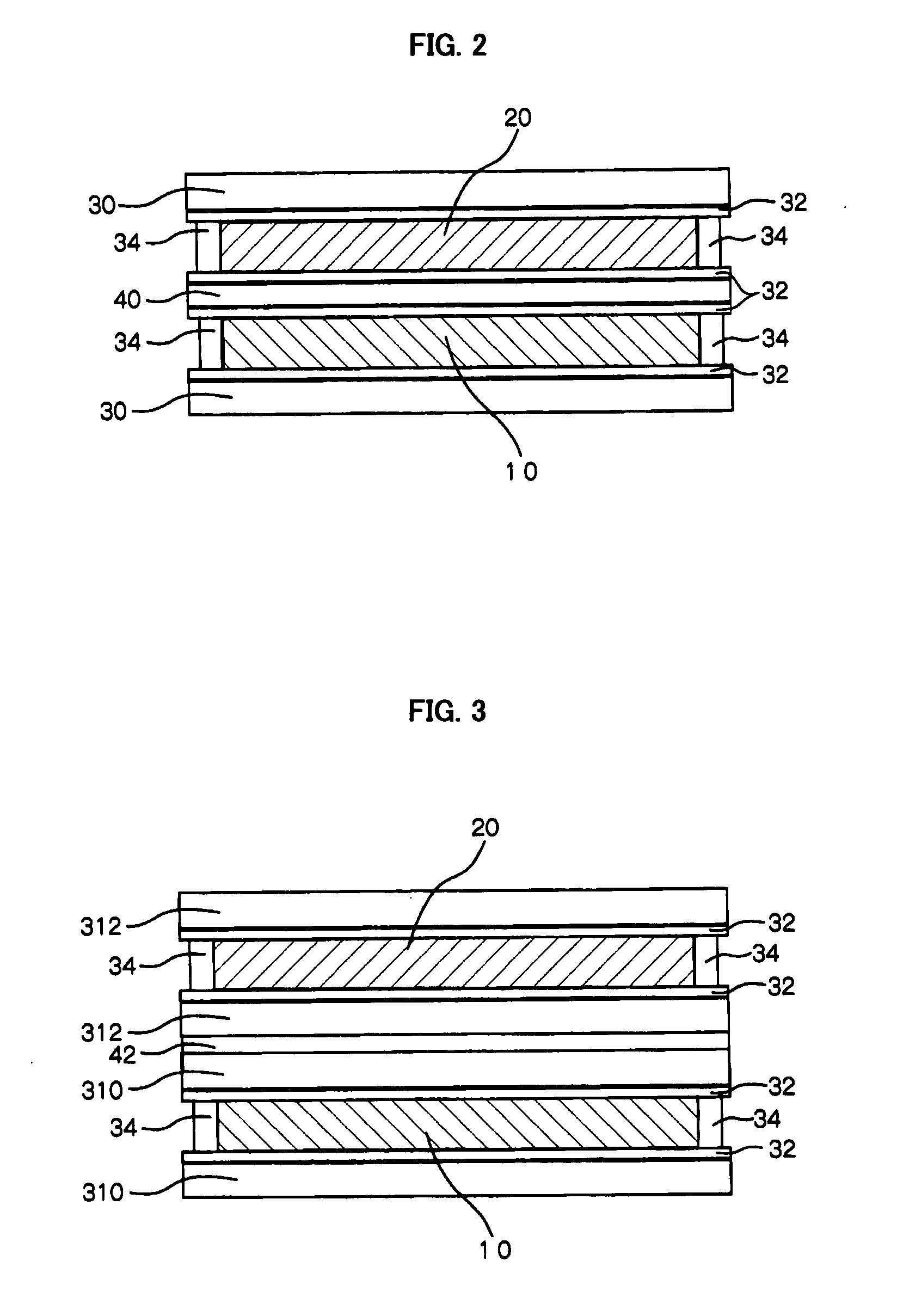Light modulating material
a technology light transmittance, which is applied in the field can solve the problems of reducing the light transmittance deteriorating coloring properties, and the inability of light modulating material to be in a transparent sta
- Summary
- Abstract
- Description
- Claims
- Application Information
AI Technical Summary
Benefits of technology
Problems solved by technology
Method used
Image
Examples
example 1
Production of Second Liquid Crystal Layer
[0208]A vertical alignment film: SE-1211 (trade name, manufactured by Nissan Chemical Industries, Ltd.) was applied to each of ITO substrates (manufactured by EHC: 100Ω / □) and the resultants were then sintered. The resultant substrates were attached at an interval of 8 μm to produce a liquid crystal cell.
[0209]A liquid crystal composition precursor was made by mixing MLC-6610 (trade name, manufactured by Merck & Co., Inc., Δ∈: −3.1, Δn: 0.0996, nematic liquid crystal) used as a liquid crystal compound, with 5% by mass of A-BPE-4 (trade name, manufactured by Shin-Nakamura Chemical Co., Ltd.) used as a monomer and 0.4% by mass of DAROCUR®1173 (manufactured by Ciba Specialty Chemicals) used as a photopolymerization initiator. The liquid crystal composition precursor was injected into the liquid crystal cell, light was radiated thereonto by using a UV lamp (emission wavelength of 360 nm and power of 36 W) for 10 min, and heating was performed in ...
example 2
Production of Second Liquid Crystal Layer
[0217]SiO2 was applied on a PEN film (125Ω / □) provided with ITO to provide a film having a thickness of 3000 Å by ion plating. A mask was then applied on an area to which a sealing agent was applied and an area to which an ejection electrode was applied on the film by using polyimide tape. The film was immersed in a solution obtained by dissolving n-octadecyltrimethoxysilane in a solvent mixture of 95% by mass of isopropyl alcohol and 5% by mass of pure water, and then heated in an oven at 80° C. for 10 min.
[0218]After the polyimide tape was removed, a solution produced by dissolving 2% by mass of 3-glycidoxypropyl methoxysilane (manufactured by Chisso Corporation) in ethanol was applied on the areas from which the tape was removed, and the film was dried in an oven at 80° C. Next, the film was immersed in pure water and subsequently isopropyl alcohol in this order, subjected to ultrasonic wave washing, and dried.
[0219]After spacers each havi...
PUM
| Property | Measurement | Unit |
|---|---|---|
| light transmittance | aaaaa | aaaaa |
| light transmittance | aaaaa | aaaaa |
| thickness | aaaaa | aaaaa |
Abstract
Description
Claims
Application Information
 Login to View More
Login to View More - R&D
- Intellectual Property
- Life Sciences
- Materials
- Tech Scout
- Unparalleled Data Quality
- Higher Quality Content
- 60% Fewer Hallucinations
Browse by: Latest US Patents, China's latest patents, Technical Efficacy Thesaurus, Application Domain, Technology Topic, Popular Technical Reports.
© 2025 PatSnap. All rights reserved.Legal|Privacy policy|Modern Slavery Act Transparency Statement|Sitemap|About US| Contact US: help@patsnap.com



